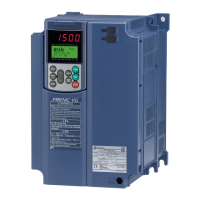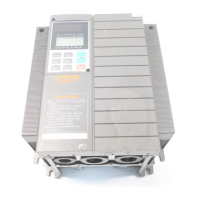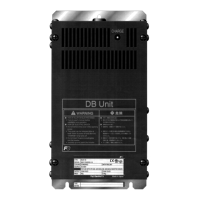[ 3 ] Calculation of the deceleration time
In a load system shown in Figure 10.3-5, the time needed to stop the motor rotating at a speed of N
M
(r/min) is
calculated with the following equation:
(Equation 10.3-16)
where,
J
1
: Motor shaft moment of inertia (kg·m
2
)
J
2
: Load shaft moment of inertia converted to motor shaft (kg·m
2
)
τ
M
: Minimum motor output torque in braking (or decelerating) motor (N·m)
τ
L
: Maximum load torque converted to motor shaft (N·m)
η
G
: Reduction-gear efficiency
In the above equation, generally output torque τ
M
is negative and load torque τ
L
is positive. So, deceleration time
becomes shorter.
[ 4 ] Calculating non-linear acceleration/deceleration time
In applications requiring frequent acceleration/deceleration, the inverter can accelerate/decelerate the motor in the
shortest time utilizing the maximum torque capability. The inverter in vector control mode can easily perform this
type of operation.
Figure 10.3-6 An Example of Driving Characteristics with a Constant Output Range
In this case, the acceleration/deceleration vs. speed curve will form a non-linear figure, and the acceleration /
deceleration time cannot be calculated by a single expression.
Generally, the acceleration/deceleration time is obtained by calculating the acceleration/deceleration time of DN
that is a difference of speed N broken into small parts, and then integrating it to obtain the total
acceleration/deceleration time from start to end. Because the smaller DN provides higher accuracy, this numerical
calculation needs an aid of a computer program.
The following is a guide for the numerical calculation method using a computer program.
Figure 10.3-6 illustrates an example of driving characteristics with a constant output range. In the figure, the range
under N
0
is of constant torque characteristics, and the range between N
0
and N
1
is of a constant output with the
non-linear acceleration/deceleration characteristics.
The expression (Equation 10.3-17) gives an acceleration time Δt
ACC
within a ΔN speed increment.

